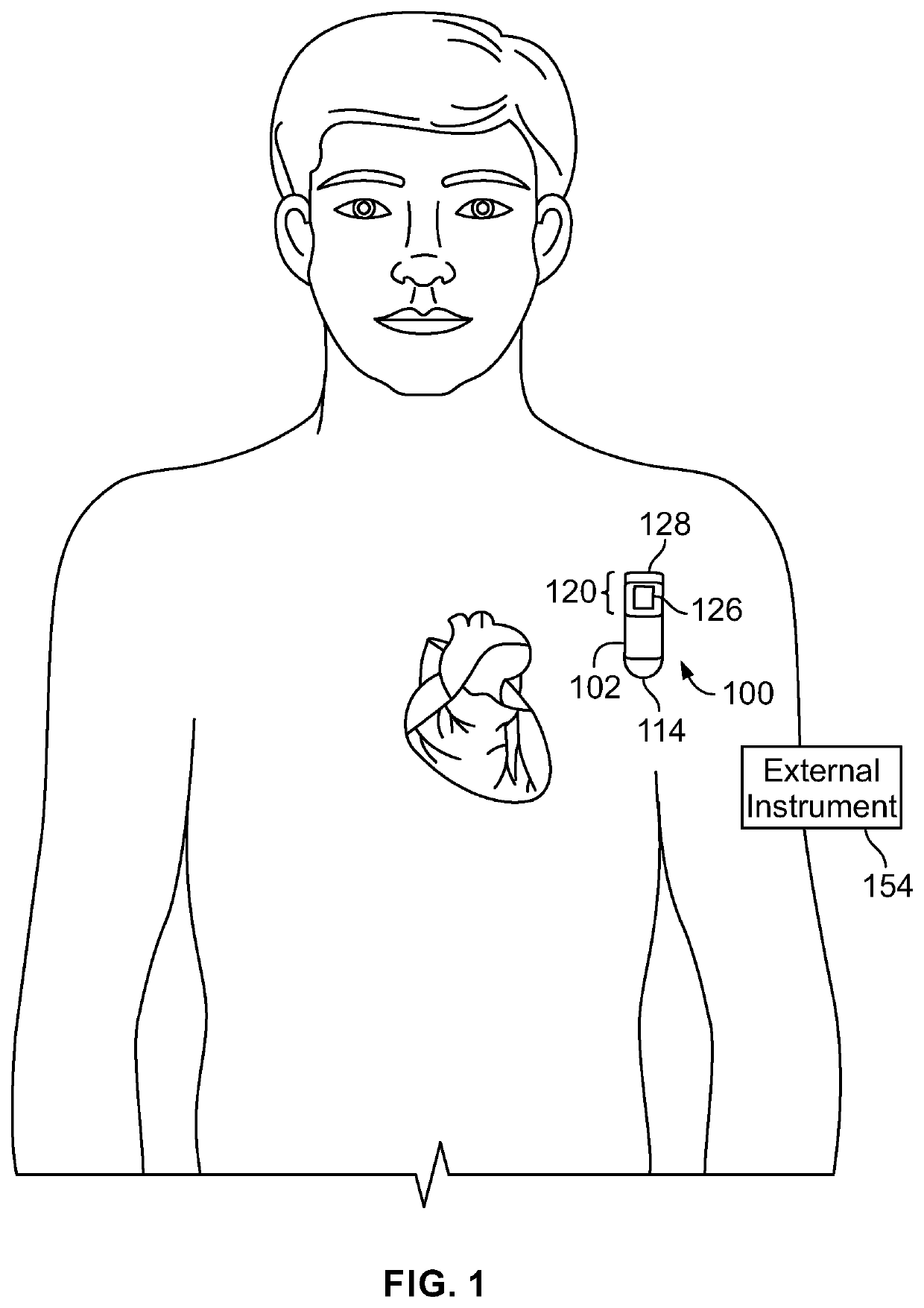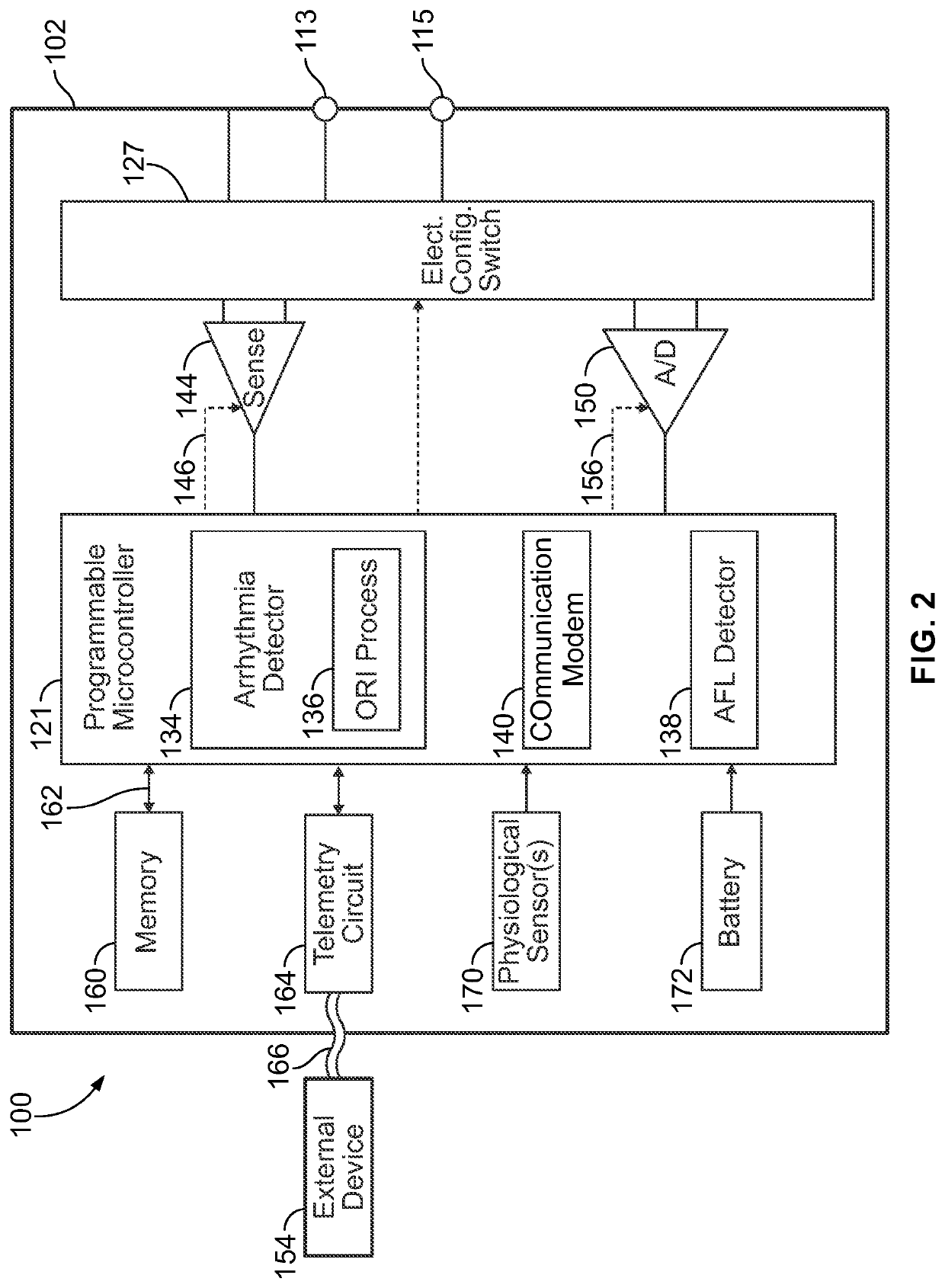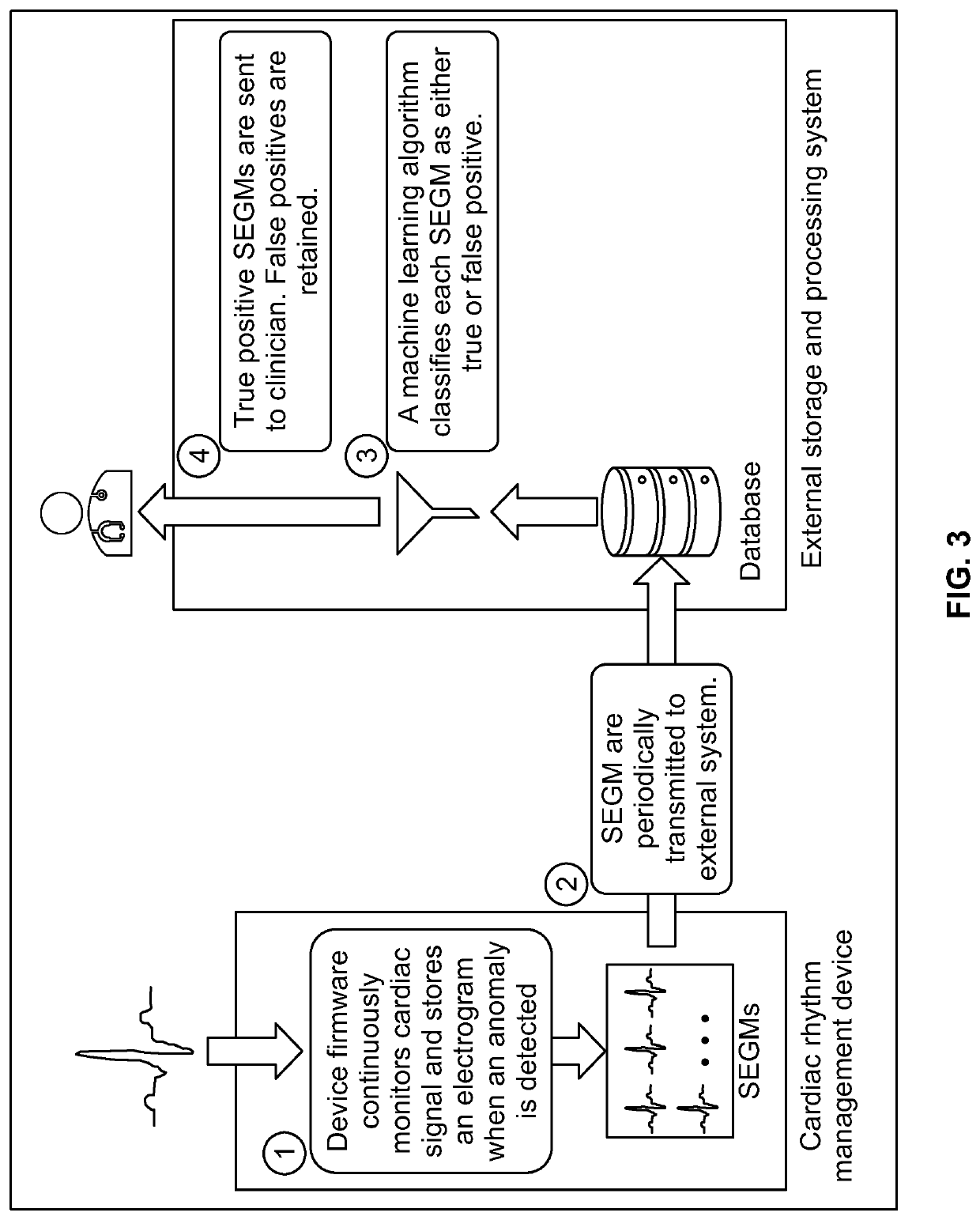Methods and systems to confirm device classified arrhythmias utilizing machine learning models
a machine learning model and arrhythmia technology, applied in the field of confirm device classified arrhythmias, can solve the problems of pvcs presenting a substantial challenge in connection with atrial fibrillation, false arrhythmia detection, and erroneous declaration
- Summary
- Abstract
- Description
- Claims
- Application Information
AI Technical Summary
Benefits of technology
Problems solved by technology
Method used
Image
Examples
Embodiment Construction
[0030]The terms “cardiac activity signal”, “cardiac activity signals”, “CA signal” and “CA signals” (collectively “CA signals”) are used interchangeably throughout and shall mean an analog or digital electrical signal recorded by two or more electrodes positioned subcutaneous or cutaneous, where the electrical signals are indicative of cardiac electrical activity. The cardiac activity may be normal / healthy or abnormal / arrhythmic. Non-limiting examples of CA signals include ECG signals collected by cutaneous electrodes, and EGM signals collected by subcutaneous electrodes.
[0031]The term “subcutaneous” shall be below the skin surface but not within the heart and not transvenous.
[0032]The terms “device classified arrhythmia data set” and “DCA data set” are used interchangeably and shall mean a data set that includes i) CA signals collected in response to a determination by an IMD that the CA signals are indicative of an arrhythmia of interest and ii) one or more device documented marke...
PUM
 Login to View More
Login to View More Abstract
Description
Claims
Application Information
 Login to View More
Login to View More - R&D
- Intellectual Property
- Life Sciences
- Materials
- Tech Scout
- Unparalleled Data Quality
- Higher Quality Content
- 60% Fewer Hallucinations
Browse by: Latest US Patents, China's latest patents, Technical Efficacy Thesaurus, Application Domain, Technology Topic, Popular Technical Reports.
© 2025 PatSnap. All rights reserved.Legal|Privacy policy|Modern Slavery Act Transparency Statement|Sitemap|About US| Contact US: help@patsnap.com



